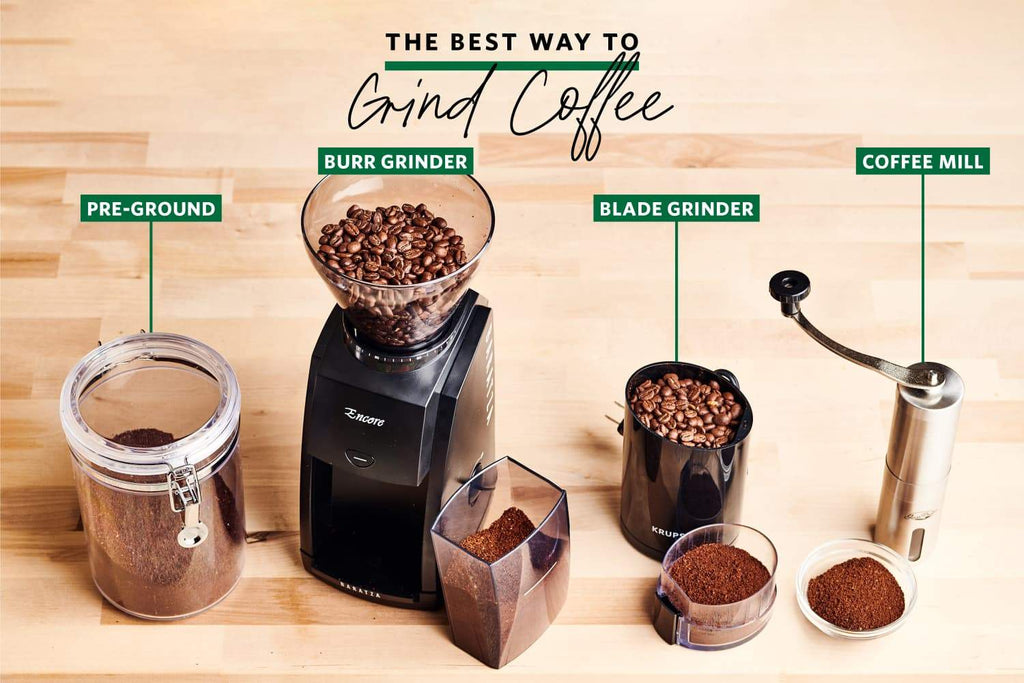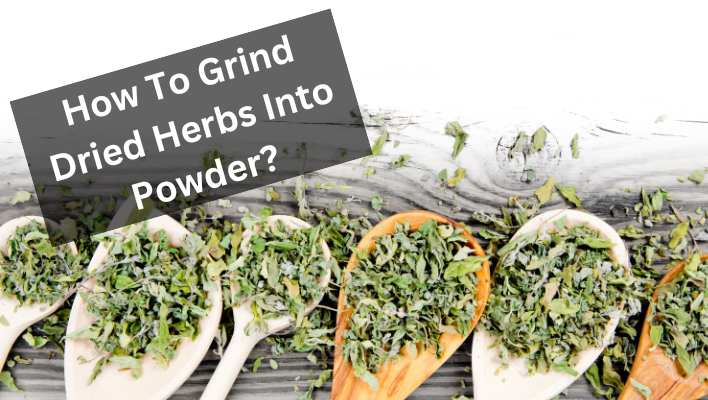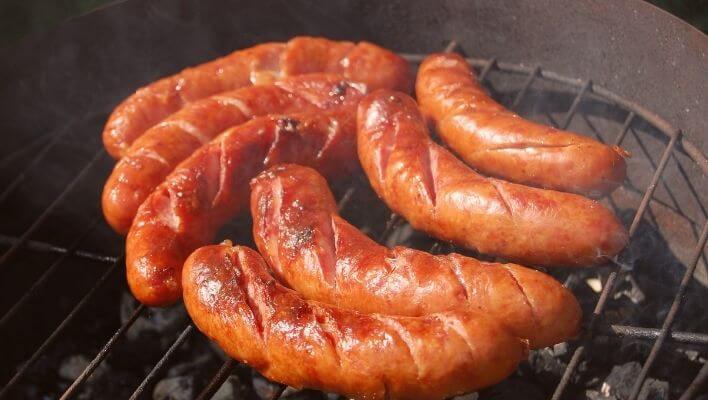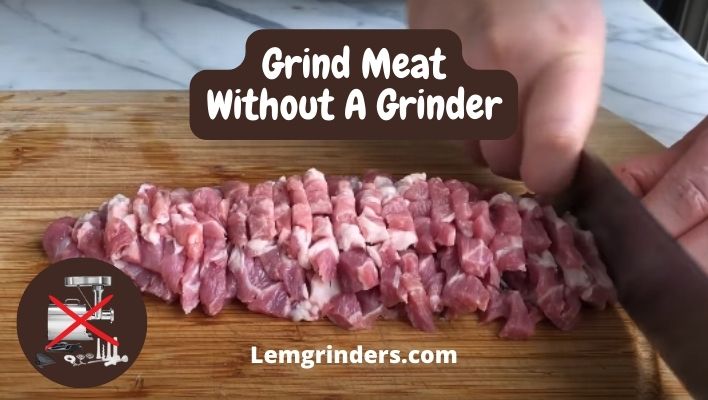Grind coffee beans for about 15 to 30 seconds for a medium coarseness that is ideal for most brewing methods. Grinding coffee beans to the right consistency is crucial for a flavorful and balanced cup of coffee.
The size of the coffee grounds affects the extraction process, determining the strength and taste of the resulting brew. Whether you prefer a coarse grind for French press or a finer grind for espresso, finding the right balance is key to achieving the desired flavour profile.
We will explore the different factors to consider when grinding coffee beans and guide you on how long you should grind them to optimize your brewing experience.
Read Also: Are Oily Coffee Beans Bad for Grinder
Understanding The Importance Of Grinding Duration
When it comes to brewing the perfect cup of coffee, many variables come into play. One of the most crucial factors that can significantly impact the flavor and aroma of your coffee is the grinding duration. The way in which coffee beans are ground plays a fundamental role in extracting the desired flavors and oils, ultimately determining the overall taste of your java.
The Role Of Grinding In Coffee Brewing
Grinding the coffee beans is a crucial step in the brewing process. By grinding the beans, you are increasing the surface area, allowing for proper extraction of the soluble compounds within the coffee. This extraction process is what releases the rich flavors and aromas we associate with a well-brewed cup of coffee.
How Long Should You Grind Coffee Beans For Optimum Flavor?
The ideal grind duration for coffee beans varies depending on the brew method you are using. Different methods require specific grind sizes to achieve the best flavor profile. Here are some general guidelines to help you determine the appropriate grind duration for your preferred brew method:
| Brew Method | Grind Duration |
|---|---|
| Pour Over | Medium-fine |
| French Press | Coarse |
| Espresso | Very fine |
It is important to note that these are general guidelines, and the ideal grind duration may vary based on personal preference and the specific coffee beans you are using. Experimentation is key to finding the perfect grind duration to suit your taste.
Factors That Affect Grinding Duration
Several factors influence the optimal duration for grinding coffee beans. Consider the following:
- Coffee bean freshness: Freshly roasted beans require a shorter duration to achieve an optimal grind, as they are less likely to be stale and easier to break down.
- Roast level: Lighter roasts generally require a shorter grinding duration, while darker roasts may need a bit more time to yield the desired particle size.
- Brew method: Different brewing methods demand different grind sizes, which will affect the duration required. Adjust your grinding time based on the brew method you use.
- Grinder quality: The type and quality of your grinder can also impact the grinding duration. Burr grinders are often preferred as they provide a more consistent grind and allow for control over the particle size.
By understanding the importance of grinding duration and considering these factors, you can experiment and refine your coffee brewing process to achieve the ideal flavor and aroma in each cup.
Read Also: Can You Grind Coffee Beans by Hand
Fine, Medium, Or Coarse: Choosing The Right Grind Size
When it comes to brewing coffee, one crucial factor that often gets overlooked is the grind size of the coffee beans. The grind size directly affects the flavor extraction during the brewing process, making it essential to choose the right grind size for your desired cup of coffee. In this article, we will explore the different grind sizes, understand their impact on flavor extraction, and find the ideal grind size for your preferred brewing method.
Overview Of Different Grind Sizes
Grind size refers to the coarseness or fineness of the coffee grounds. It plays a significant role in extracting the desired flavors from the beans. Let’s take a closer look at the three main types of grind sizes:
| Grind Size | Description |
|---|---|
| Fine | Characterized by a powdery texture, fine grind coffee beans are ideal for brewing methods like espresso or Turkish coffee. The finer particles allow for a faster extraction, resulting in a rich and intense flavor profile. |
| Medium | Medium grind falls between the fine and coarse grind, making it suitable for popular brewing methods like drip coffee or pour-over. The medium-sized particles strike a balance, ensuring proper extraction without excessive bitterness. |
| Coarse | Coarse grind beans have a noticeably larger particle size. This grind size is typically used for brewing methods like French press or cold brew. The coarse particles allow for a slower extraction process, resulting in a milder and less acidic cup of coffee. |
Impact Of Grind Size On Flavor Extraction
The grind size directly influences the rate at which the coffee grounds interact with water during brewing. The extraction process involves dissolving the compounds within the coffee beans to extract flavors. Here’s how different grind sizes affect flavor extraction:
- Fine Grind: Due to the small particle size, fine grind coffee has a larger surface area exposed to water. This results in a quicker extraction process, extracting a higher amount of compounds, including oils and flavors. However, if the extraction time is too long, it can lead to over-extraction and a bitter taste.
- Medium Grind: The medium-sized particles strike a balance between the surface area and extraction time. This allows for a more even extraction, resulting in a well-rounded flavor profile with fewer bitter notes.
- Coarse Grind: Coarse grind coffee grounds have a smaller surface area in contact with water, leading to a slower extraction process. This results in a smoother and less acidic cup of coffee, with fewer extracted compounds.
Finding The Ideal Grind Size For Your Brewing Method
The ideal grind size varies depending on the brewing method you prefer. Here are some common brewing methods and their recommended grind sizes:
- Espresso: For espresso, a fine grind size is essential to achieve the concentrated and intense flavors. The fine particles allow for a quick and efficient extraction.
- Drip Coffee: Drip coffee machines work best with a medium grind size. This allows for a balanced extraction, resulting in a flavorful and aromatic cup of coffee.
- French Press: To brew a delicious French press coffee, a coarse grind size is ideal. The larger particles allow for a slower extraction, producing a full-bodied and less acidic cup of coffee.
- Cold Brew: Cold brew coffee requires a coarse grind size to achieve the desired smooth and less acidic flavor profile. The extended steeping time compensates for the slower extraction process.
By selecting the right grind size for your preferred brewing method, you can enhance the flavor and quality of your coffee. Experiment with different grind sizes, adjust your brewing parameters, and enjoy the delightful nuances each cup has to offer.
Read Also: How Long Should You Grind Coffee Beans
Experimenting With Grind Time: Tasting The Difference
When it comes to brewing the perfect cup of coffee, grind time plays a crucial role in determining the flavor and strength of your brew. Every coffee enthusiast knows that finding the optimal grind time can make all the difference in achieving a cup that is rich, smooth, and bursting with flavors.
Conducting Taste Tests To Determine Optimal Grind Time
One of the best ways to determine the optimal grind time for your coffee beans is by conducting taste tests. This involves grinding your coffee beans at different durations and comparing the resulting flavors. By adjusting the grind time incrementally, you can fine-tune the taste profiles until you hit the sweet spot that resonates with your palate.
During the taste test, pay attention to the aroma, acidity, body, and overall flavor of the coffee. Document your findings, noting which grind times produce the best results. This step-by-step approach allows you to develop a deeper understanding of the impact grind time has on the final cup.
Adjusting Grind Time To Balance Flavor And Strength
Understanding how grind time affects flavor and strength is key to achieving your desired coffee experience. Generally, a longer grind time, resulting in finer grounds, produces a stronger brew with more intense flavors. On the other hand, a shorter grind time, resulting in coarser grounds, tends to yield a milder cup with lighter flavors.
However, it’s important to note that every coffee bean variety and brewing method may require slight variations in grind time. Experiment with different durations to find the right balance between flavor and strength that aligns with your taste preferences.
Popular Techniques For Measuring Grind Consistency, Ensuring Uniformity
Measuring the consistency of your coffee grounds is crucial for achieving optimal extraction during the brewing process. Here are a few popular techniques for ensuring grind consistency:
- Using a burr grinder: Burr grinders offer precise control over the grind size, resulting in uniform coffee grounds.
- Using sieves: Sieves can help separate coffee grounds into different sizes, ensuring you discard any inconsistent particles.
- Performing the squeeze test: Simply take a small amount of ground coffee between your fingers and give it a gentle squeeze. If the grind feels consistent and coarse, you know you’re on the right track.
Each of these techniques can be used to measure the uniformity of your grind and make adjustments accordingly. Consistent grind size ensures that the water extracts the optimal amount of flavor from the coffee grounds, leading to a more satisfying cup of coffee.
Read Also: Can You Grind Coffee Beans in a Cuisinart
Special Considerations: Grinding For Espresso And Cold Brew
Grinding coffee beans to the perfect consistency is vital for achieving a delicious cup of coffee. However, when it comes to espresso and cold brew, special considerations must be made to ensure optimal flavor and extraction. Understanding the unique grind requirements for espresso and exploring the benefits of a finer grind for espresso are key to elevating your coffee experience. Similarly, achieving the perfect grind for smooth and well-extracted cold brew requires attention to detail. Let’s delve into these considerations and learn how to attain the perfect grind for each brewing method.
Understanding The Unique Grind Requirements For Espresso
Espresso, known for its strong and concentrated flavor, demands a specific grind size to achieve its signature taste. The grind for espresso is significantly finer compared to other brewing methods. This is because a fine grind allows for a slower extraction, resulting in a rich and creamy espresso shot.
Exploring The Benefits Of A Finer Grind For Espresso
A finer grind size for espresso offers several advantages. Firstly, it increases the surface area of the coffee, facilitating greater contact with the water during the extraction process. This enhanced contact leads to a more flavorful and robust espresso shot. Secondly, a fine grind helps to slow down the water flow, ensuring that the precious coffee flavors have enough time to dissolve. The final result is a velvety smooth espresso with a well-balanced taste and a thick layer of crema on top.
Achieving The Perfect Grind For Smooth And Well-extracted Cold Brew
Cold brew, on the other hand, requires a coarser grind compared to espresso. The reason behind this lies in the longer steeping process involved in cold brewing. A coarse grind prevents over-extraction and results in a smooth, low-acidity coffee concentrate.
To achieve the perfect grind for cold brew, aim for a consistency similar to coarse sea salt. This ensures that the water and coffee have ample contact without extracting too much bitterness. The coarser grind allows for a longer steeping time, typically ranging from 12 to 24 hours, resulting in a full-bodied and flavorful cold brew.
Read Also: Breville Coffee Grinder How to Use
Expert Tips For Consistent And Flavorful Grinding
Properly grinding your coffee beans is a crucial step to achieve that perfect cup of joe. Not only does it affect the overall flavor and aroma, but it also determines the strength and extraction of your brew. In this article, we will discuss some expert tips to help you achieve consistent and flavorful grinding results every time.
Maintaining The Freshness Of Coffee Beans For Better Grinding
To ensure the best grinding experience, it’s important to start with fresh coffee beans. The freshness of coffee plays a significant role in the flavor of your brew. Here are some tips to maintain the freshness of your coffee beans:
- Buy whole bean coffee: Whole bean coffee stays fresher longer than pre-ground coffee. When you’re ready to brew, grind only the amount of coffee you need for that specific brew.
- Store coffee beans in an airtight container: Oxygen is the enemy of coffee beans as it causes them to stale quickly. Invest in a good quality airtight container to keep your beans fresh for a longer period.
- Avoid moisture, light, and heat: Coffee beans should be stored in a cool, dry, and dark place. Avoid exposing them to direct sunlight, humidity, and heat as these factors can degrade the quality and flavor of the beans.
Proper Storage Techniques For Preserving Flavor
In addition to maintaining freshness, proper storage techniques can help preserve the flavor of your coffee beans. Here are some storage tips to keep in mind:
- Avoid storing coffee beans in the refrigerator: While the refrigerator might seem like a logical place to store coffee beans, it can actually introduce moisture and unwanted odors into the beans.
- Keep away from strong-smelling substances: Coffee beans are highly absorbent, so it’s crucial to keep them away from strong-smelling substances like spices or other aromatic foods.
- Grind only what you need: Grinding coffee beans exposes them to oxygen, causing them to lose flavor quickly. Therefore, it’s best to grind only the amount of coffee you need for each brew to ensure maximum freshness and flavor.
Investing In The Right Grinder For Consistent Results
Choosing the right grinder is essential for achieving consistent and flavorful grinding results. Here are a few things to consider:
- Choose a burr grinder: Burr grinders are known for their precision and consistency, allowing you to adjust the grind size according to your brewing method. They offer better control over the grinding process, resulting in a more uniform grind.
- Consider the grind settings: Look for a grinder that offers a wide range of grind settings. This versatility allows you to achieve the desired consistency for different brewing methods, such as French press, pour-over, or espresso.
- Invest in a quality grinder: While it may be tempting to opt for a cheaper grinder, investing in a high-quality grinder will yield better results in the long run. A reliable, well-built grinder ensures consistent grind size, resulting in a more balanced and flavorful cup of coffee.
By following these expert tips, you can elevate your coffee grinding game and enjoy a consistently delicious cup of coffee every time. Remember to keep your beans fresh, store them properly, and invest in a quality grinder to achieve that perfect grind for a flavorful and aromatic brew.

Credit: nusacoffeecompany.com
Frequently Asked Questions For How Long Should You Grind Coffee Beans
How Long To Grind Coffee Beans In Grinder?
Grinding coffee beans in a grinder takes about 10-20 seconds for a medium grind, 20-30 seconds for a fine grind, and 30-40 seconds for an extra-fine grind.
How Do You Grind Coffee Beans Perfectly?
To grind coffee beans perfectly: 1. Adjust your grinder to a medium-coarse setting. 2. Measure your desired coffee-to-water ratio. 3. Grind the beans, shaking the grinder gently to ensure even consistency. 4. Use the ground coffee immediately, as freshness matters.
5. Experiment with different grind settings for your preferred taste.
Can You Grind Coffee Beans For Too Long?
Grinding coffee beans for too long can result in over-extraction. This can make the coffee bitter and ruin the flavor. Stick to the recommended grinding time to ensure a delicious cup of joe.
Should I Grind All Of My Coffee Beans At Once?
Grinding all your coffee beans at once is not recommended. Grinding them just before brewing ensures freshness and better flavor.
Read Also: How to Grind Espresso Beans Without a Grinder
Conclusion
To sum it up, finding the perfect grind for your coffee beans is crucial in extracting the best flavors and aromas. Whether you prefer a fine, medium, or coarse grind will depend on your brewing method and personal taste preferences.
Experimentation is key to discovering what works best for you. Remember to invest in a good quality grinder and always use fresh beans for the ultimate coffee experience. Cheers to a perfectly ground cup of joe!






